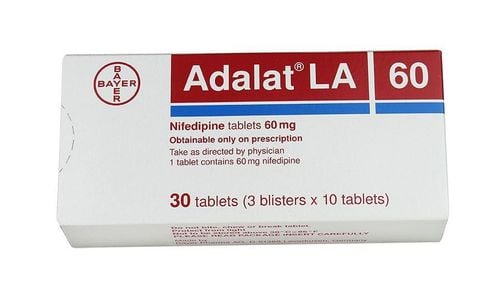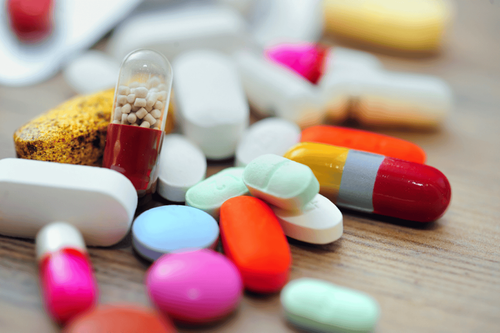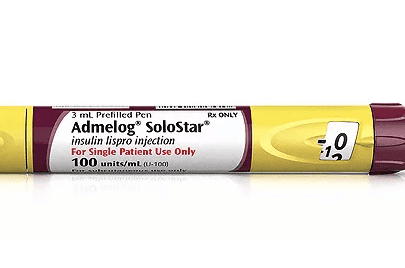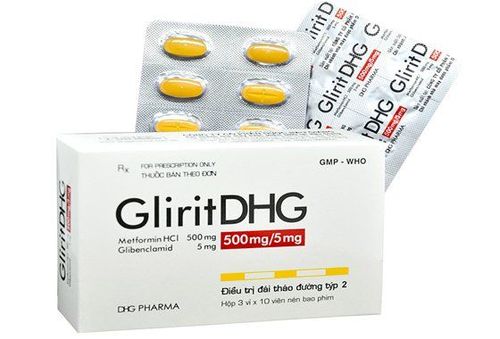This is an automatically translated article.
Another dangerous complication that often occurs when treating diabetes with insulin is hypoglycemia. It can be caused by an overdose of insulin, a change in diet, stress, an infection or a digestive disorder. Therefore, during insulin use, it is necessary to monitor blood sugar regularly.
1. The role of insulin
Insulin is indicated for the treatment of type 1 diabetes (insulin dependent diabetes mellitus), type 2 diabetes mellitus when synthetic antidiabetic drugs are no longer effective. Insulin is used to stabilize blood sugar in diabetic emergencies.
Children who are thin and weak, have poor appetite, are malnourished, have a lot of vomiting and have impaired glucose metabolism are also indicated for glucose infusion combined with insulin. In addition, insulin is also used to induce insulin shock in the treatment of mental illness (producing sudden and strong hypoglycemia).
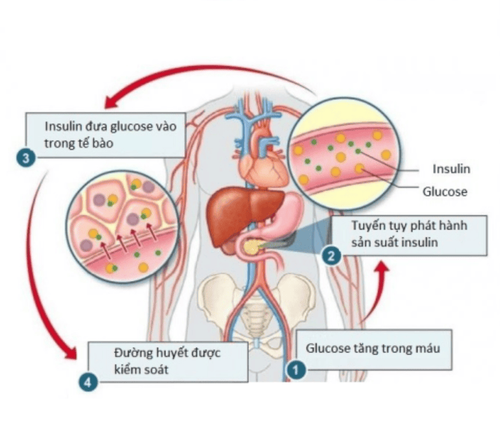
Cơ chế hấp thụ insulin
1.1 The role of insulin for people without diabetes For the average person, insulin helps regulate blood sugar (glucose). After eating, carbohydrates are broken down into glucose and then the glucose enters the bloodstream. The pancreas responds by producing insulin, which allows glucose to enter the body's cells for energy.
Glucose is stored for excess energy. Glucose will be stored in the liver as glycogen when insulin levels are high after eating. When fasting, insulin levels will be low, the liver releases glycogen into the blood as glucose. This keeps blood glucose levels within a narrow range.
1.2 The Role of Insulin for Diabetics Glucose levels will continue to rise after eating because there is not enough insulin to move glucose into the body's cells. Patients with type 2 diabetes do not use insulin effectively (insulin resistance) and do not produce enough insulin.
For patients with type 1 diabetes, no or little insulin is produced. If long-term diabetes is not detected and untreated, high blood sugar at this time will lead to complications related to vision, nerves, kidneys, heart, ..
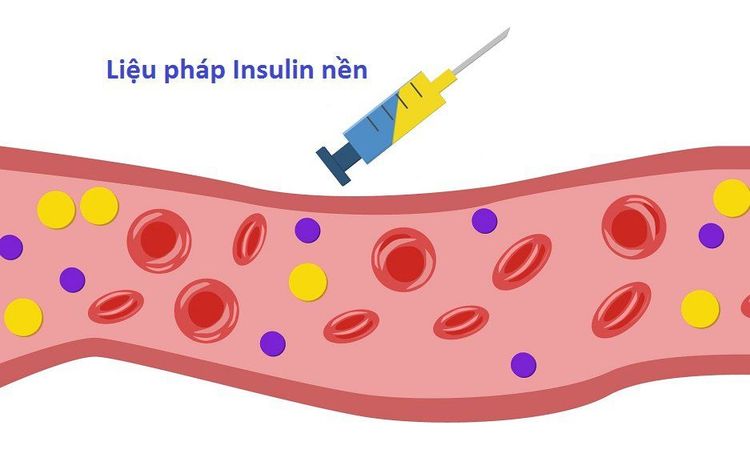
Insulin được sử dụng điều trị bệnh tiểu đường
Treatment of diabetes with insulin is one of the common methods along with that, the patient should also adhere to the diet and exercise regimen given by the doctor. To be able to accurately diagnose diabetes and measure glucose results, it is necessary to test HbA1c.
2. Side effects of insulin in diabetes treatment
2.1 Hypoglycemia Insulin injections for diabetes can cause a rapid and sudden drop in blood sugar levels, possibly even leading to a coma. Hypoglycemia is the most common unwanted insulin side effect. When the body shows symptoms such as: fatigue, headache, hunger, visual disturbances, excessive sweating and confusion, patients should immediately use fast-dissolving sugars (candy, sugar tablets, etc.). jam) to quickly improve the above symptoms.
In more severe cases or coma, a single dose of glucagon (0.5 to 1mg) (GlucaGen HypoKit) may be needed and have someone know how to give it or have a healthcare professional give you an IV infusion of glucose.
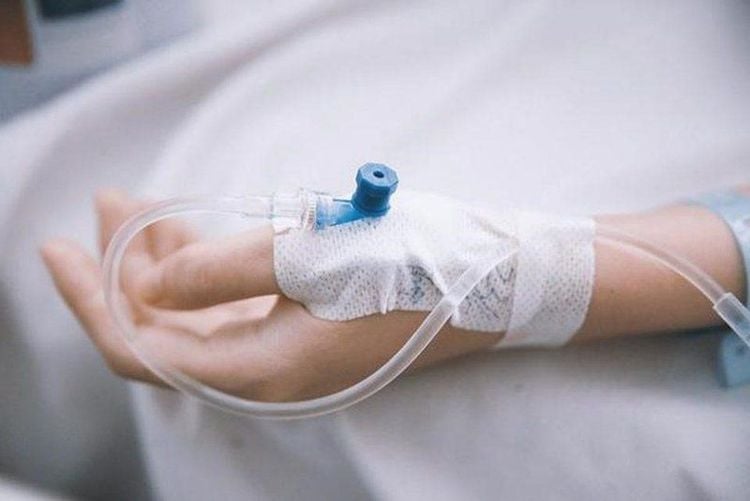
Tiêm truyền glucose bằng đường tĩnh mạch
The patient must be given glucose infusion if not responding to Glucagon within 10-15 minutes. To avoid re-coma, when the patient wakes up, it is necessary to give carbohydrate-containing food.
2.2 Allergic reactions Local reactions such as redness, swelling or itching at the injection site and will disappear after a few days to a few weeks. Allergies can be related to other factors such as irritating antiseptics, too shallow injections or allergies to ingredients that are preservatives.
Rarer systemic reactions, possibly related to insulin or metacresol. These two substances can cause systemic reactions such as shortness of breath, wheezing, hypotension, increased heart rate or sweating. When an allergic reaction occurs, in some cases, only antihistamines are needed, but most need to be treated with adrenaline and intravenous glucocorticoids.
2.3 Lipid Dystrophy When there is a depression of the skin, more severe can completely lose subcutaneous fat in a large area at the injection site, it is a lipid dystrophy.
This is one of the most common serious complications in children and women that can appear from 1 to 6 months after injection, causing atrophy of the subcutaneous fat at the injection site. Regularly flexibly changing the injection site such as subcutaneous injection around the navel 5cm from the navel, or injection of the buttocks, hands, and thighs can limit the risk of lipid dystrophy (proliferation or atrophy of the subcutaneous fat layer)..
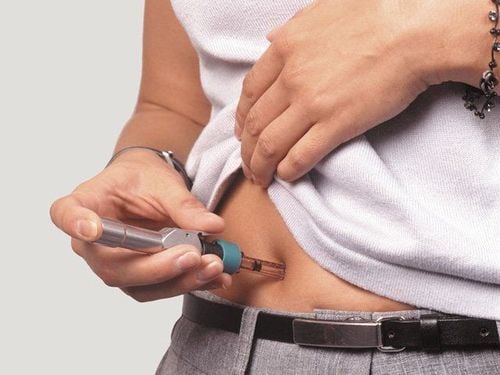
Teo lớp mỡ dưới da tại chỗ tiêm
2.4 Weight gain Injecting insulin to someone who is being treated for diabetes as indicated can also cause weight gain due to its anabolic-stimulating effect. The goal of insulin injection is to get glucose into cells and lower blood sugar levels. However, if the patient's diet is high in calories, the amount of glucose that the cells cannot use will be stored as fat and make the patient gain weight quickly.
2.5 Insulin Overdose An insulin overdose can happen if a person takes more insulin than the body needs or regulates the insulin itself not as directed. There are also times when skipping meals or eating irregularly will also very seriously affect the insulin dose adjustment of the treating doctor and can lead to hypoglycemia. The worst cases can lead to convulsions even death
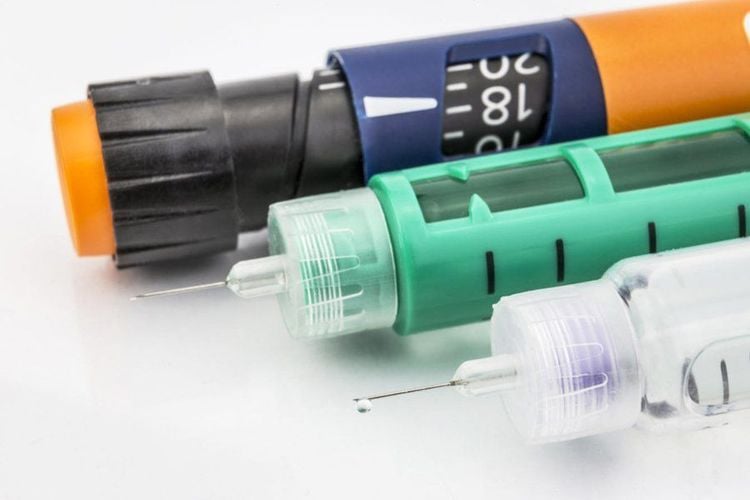
Người bệnh sử dụng insulin theo đúng liều bác sĩ chỉ định
3. Be careful when using insulin to treat diabetes
Inadequately adjusted insulin doses or intermittent treatment, especially in type 1 diabetes, can lead to hyperglycemia and diabetic ketoacidosis.
The first symptoms of hyperglycemia are often subtle or appear gradually, lasting many days, many hours such as increased thirst, frequent urination, nausea, vomiting, lethargy, dry and red skin, dry mouth, lack of appetite, breath smells of acetone.
Untreated hyperglycemia eventually leads to diabetic ketoacidosis, which is common in type 1 diabetes and is very likely to be fatal. Comorbidities, including infections and low-grade fever, will often increase the patient's insulin requirements.
People with liver failure, kidney failure may reduce insulin requirements. Dose adjustment is also necessary if patients are physically active, athletes or those who change their daily diet.

Người bệnh suy gan cần giảm nhu cầu insulin
When switching to another type of insulin or to another brand of insulin, it is absolutely necessary to consult a doctor. The dose of insulin should be changed at the first dose or during the first few weeks or months when there are changes in the concentration, brand (manufacturer), type (rapid-acting insulin, medium-acting insulin, insulin prolonged use...), type (animal insulin, human insulin) or method of recombinant DNA production compared with insulin of animal origin.
Compared with previous insulin administration, some patients who experienced hypoglycaemic reactions after switching from animal insulin to human insulin reported that the early warning symptoms of hypoglycaemia were less potent than or have a different manifestation of symptoms of hypoglycemia.
Patients whose blood glucose levels have markedly improved as a result of intensive insulin therapy may have a change in the common prognostic symptoms of hypoglycemia and these patients should be informed in advance by their treating physician.
The drug in an insulin pump for continuous subcutaneous insulin infusion (CSII) should not be used because of the risk of precipitation in some insulin pump catheters.
Hypoglycemia can impair a patient's ability to concentrate and react, making it dangerous in situations such as driving or operating machinery that require caution.
Especially patients who do not recognize the warning signs of hypoglycemia should refrain from driving.

Người bệnh lái xe cần thận trọng với hạ đường huyết
Since insulin does not cross the placental barrier, there are no restrictions on the treatment of diabetes with insulin during pregnancy. Aggressive glucose control during monitoring or insulin therapy for pregnant women with diabetes is recommended throughout pregnancy and when planning to become pregnant.
The need for insulin in the first 3 months of pregnancy is usually small and will increase gradually in the second and third months of pregnancy. After delivery, insulin requirements quickly return to pre-pregnancy levels.
Also, because insulin administered to a nursing mother does not harm the baby, there are no restrictions on the treatment of diabetes with insulin during lactation. However, the doctor needs to adjust the insulin dose that can be reduced.
In general, when experiencing any side effects, the patient should immediately notify the doctor to get appropriate adjustments. If you experience an allergic reaction to insulin, you need to stop taking it immediately.
Be cautious and adhere to as well as periodically re-examine according to the appointment of the treating doctor to control blood sugar to avoid unwanted complications due to diabetes.

Kiểm tra sức khỏe định kỳ là việc làm cần thiết
Currently, Vinmec International General Hospital offers diabetes screening, blood lipids and diabetes outpatient management packages - hyperlipidemia to help patients detect, control and treat the disease effectively.
Please dial HOTLINE for more information or register for an appointment HERE. Download MyVinmec app to make appointments faster and to manage your bookings easily.





